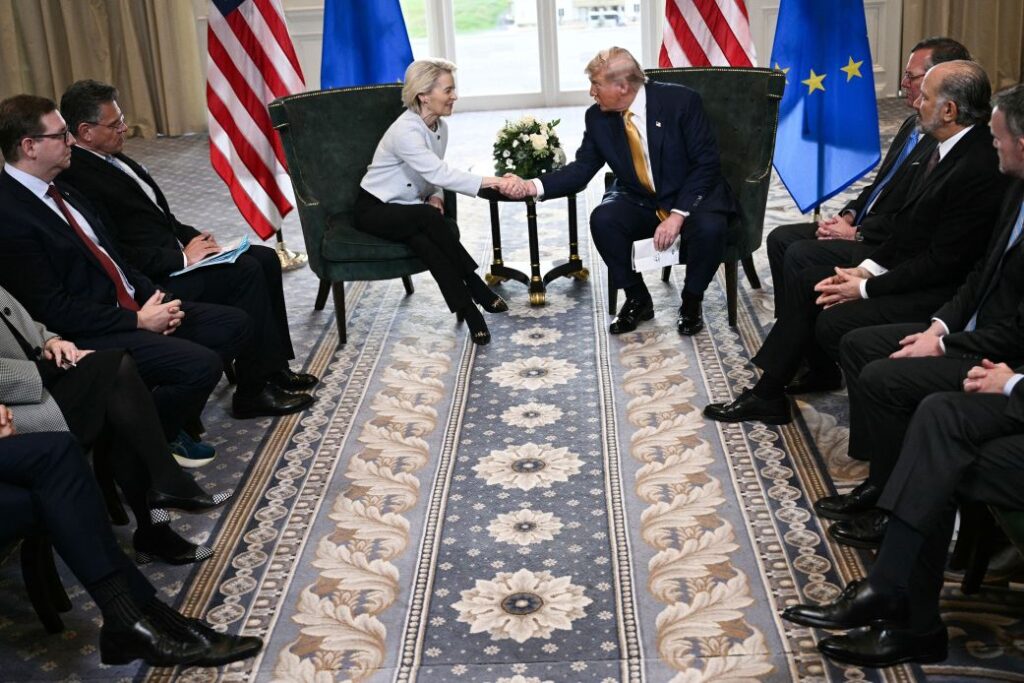The United States and the European Union avoided the worst-case scenario: a damaging, all-out trade war between allies that threatened to raise prices on a large number of goods and slow two of the world’s largest economies. The framework delivered a sense of relief for both sides – but few are cheering the arrangement itself.
The agreement, which sets a 15% tariff on most European goods entering the United States, is higher than the 10% tariff Trump put in place on April 2 and significantly higher than the average of around 1.2% from before Trump’s presidency. But it’s significantly less than the enormous numbers Trump had been threatening if an agreement wasn’t reached.
A deal with the United States felt like an impossibility in late May. Frustrated by a lack of progress in negotiations with the 27-member European Union, Trump on May 24 told the world he was done talking to some of America’s strongest allies.
“Our discussions with them are going nowhere!” Trump posted on Truth Social.
“I’m not looking for a deal,” he said later that day in the Oval Office. “We’ve set the deal — it’s at 50%.”
